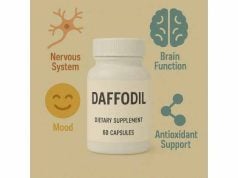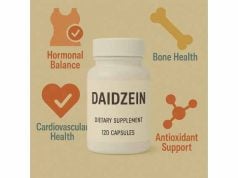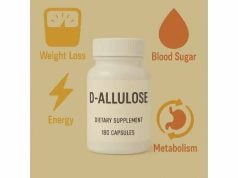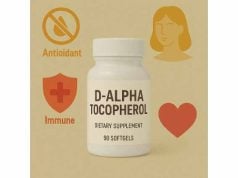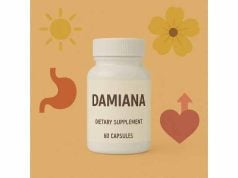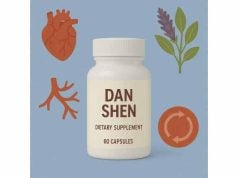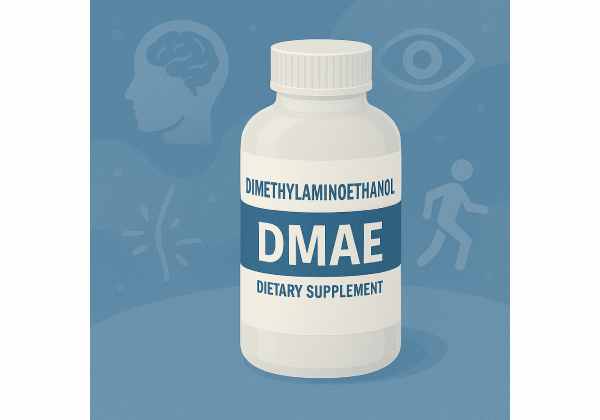
Dimethylaminoethanol (DMAE)—also labeled deanol or DMAE bitartrate—is a choline-like compound used in two main ways: as a nootropic supplement for attention and mood, and as a topical cosmetic ingredient to improve skin tone and firmness. Although it has a long history in over-the-counter products, the modern clinical evidence is mixed and often limited to small or short-term studies. In the brain, DMAE may influence acetylcholine pathways involved in attention and working memory; on the skin, it appears to enhance firmness and surface smoothness in the short term. Safety is generally acceptable at typical cosmetic concentrations and customary oral amounts, but DMAE is not the same as choline and it can cause stimulation-like effects in some people. This guide explains what DMAE is, how it is used, the realistic benefits to expect, suggested dosages, and safety considerations.
Essential Insights for DMAE Users
- May support alertness and subjective well-being in some adults; cosmetic gels can temporarily improve skin firmness.
- Evidence for cognition is modest and inconsistent; use as an adjunct, not a replacement for standard care.
- Typical oral range: 100–300 mg DMAE/day; topical range: 1–3% DMAE gels.
- Avoid if pregnant, trying to conceive, or breastfeeding; do not confuse DMAE with DMAA (a banned stimulant).
- Possible side effects include headache, insomnia, anxiety, skin irritation, and interactions with anticholinergic or cholinesterase-inhibiting drugs.
Table of Contents
- What is DMAE and how it works
- Does DMAE really help memory or skin?
- How to use DMAE: forms, dosage, and timing
- Variables that influence results
- Side effects, risks, and who should avoid
- What the science says today
What is DMAE and how it works
DMAE (dimethylaminoethanol) is a small, water-soluble tertiary amine that occurs naturally in tiny amounts in some fish. In supplements, it is usually provided as the salt DMAE bitartrate; in cosmetics, it appears in gels or serums, commonly 1–3% concentrations. DMAE is often described as a “choline precursor,” but that label oversimplifies how it behaves. In laboratory systems, DMAE can participate in pathways that affect acetylcholine—a neurotransmitter crucial for attention, motivation, and working memory. In humans, however, the extent to which oral DMAE reliably raises brain acetylcholine is uncertain. Some studies suggest DMAE may compete with choline transport or be converted inefficiently, which helps explain why results in clinical trials are mixed.
In the skin, DMAE’s most discussed actions are short-term surface tightening and improvements in the appearance of firmness. Several mechanisms have been proposed: a mild, transient effect on muscle tone of superficial facial muscles; improved water retention in the stratum corneum that increases turgor; and potential antioxidant activity that may reduce visible dullness. Cosmetic chemists also note DMAE’s amphiphilic structure, which can influence membrane dynamics and osmotic balance in keratinocytes, potentially contributing to a smoothing effect when used in leave-on formulations.
Two naming cautions matter. First, DMAE (dimethylaminoethanol) is sometimes confused online with DMAA (1,3-dimethylamylamine) or DMHA (2-aminoisoheptane). Those are different stimulants with very different risk profiles; several regulators have restricted DMAA in dietary supplements. Second, DMAE is not the same as “phosphatidylcholine,” “CDP-choline (citicoline),” or “alpha-GPC,” which are better-characterized choline donors. If your goal is purely increasing choline availability, those agents have more consistent evidence.
Because DMAE touches both neurological and dermatological pathways, its benefits depend heavily on form (oral vs topical), dose, and the outcome being measured. The remainder of this guide breaks those down so you can choose a rational approach and set realistic expectations.
Does DMAE really help memory or skin?
When you scan product pages, claims range from sharper focus to “noninvasive facelift” effects. The published evidence paints a more measured picture.
For cognition and mood, small randomized trials have tested oral DMAE, often in multi-ingredient formulas. In some adults, DMAE-containing supplements have been associated with improvements in subjective well-being, alertness, or certain attention tasks over several weeks. These effects tend to be modest, and because many formulas also include B-vitamins, minerals, or botanicals, it’s hard to isolate DMAE as the independent driver. Trials in specific conditions like ADHD or age-related cognitive decline from decades past show mixed results, with some studies failing to demonstrate clear benefit over placebo. The upshot: if you respond, you’ll likely notice a subtle lift in mental energy or task engagement rather than dramatic changes in memory scores. It should not be used to replace established therapies for diagnosed conditions.
For skin, DMAE gels and serums (commonly 3% or lower) have shown short-term improvements in the appearance of firmness and fine wrinkling, especially along the jawline and periorbital areas. In clinical and consumer studies, users often report a mild tightening sensation within minutes to hours of application and cosmetic benefits over weeks of daily use. Photographs and instrumental measures (like cutometer readings for skin elasticity) sometimes support these observations. That said, not all studies are robustly controlled, and some rely on formulations that include additional actives (e.g., antioxidants or peptides), making attribution to DMAE alone difficult. Dermatologists frequently describe DMAE as a “cosmetic” improver: it may make the skin look and feel better while used, but it is not expected to remodel deeper dermal structures like retinoids can over months.
It’s worth highlighting what DMAE probably does not do. It is unlikely to meaningfully increase long-term brain acetylcholine levels in a predictable way for most people, and it should not be relied upon for disease prevention or treatment. Topically, it is not a substitute for sunscreen, retinoids, or procedures when stronger changes are desired. Think of DMAE as a complementary option—an adjunct to proven basics—rather than a core therapy.
A practical rule of thumb: if you try an oral product, give it 2–4 weeks to judge effects on alertness or task follow-through. For topical products, evaluate cosmetic changes after 2–8 weeks of consistent daily use, in good lighting, and ideally with standardized photos.
How to use DMAE: forms, dosage, and timing
Oral DMAE (capsules, tablets, powders). Most dietary supplements provide DMAE as DMAE bitartrate. Common label directions suggest 100–300 mg DMAE per day (total DMAE, not counting the bitartrate weight). Many people start at 100–150 mg once daily and titrate by 50–100 mg based on tolerance and effect. Because DMAE can feel mildly stimulating, morning or early-afternoon dosing is typical; avoid late-evening use if you’re prone to insomnia. Some users prefer intermittent schedules (e.g., 5 days on, 2 off) to minimize habituation, though this practice has not been formally studied.
If you stack DMAE with other cholinergics (e.g., citicoline, alpha-GPC), use conservative doses and add one change at a time. DMAE is not a substitute for these donors; if your primary goal is choline support, starting with citicoline or alpha-GPC may make more sense.
Topical DMAE (gels and serums). Cosmetic products often contain 1–3% DMAE. A thin layer applied to clean skin once or twice daily (AM and/or PM) is typical. Many users perceive a slight tightening sensation within minutes; if you experience stinging, redness, or persistent dryness, reduce frequency or switch to a lower-strength product. Combine DMAE with a broad-spectrum sunscreen during the day and, if tolerable, a nighttime retinoid for synergistic results. Because DMAE’s effects are primarily cosmetic, consistency matters more than loading doses—use it daily for 6–8 weeks before deciding.
Special populations. DMAE is not recommended during pregnancy or breastfeeding due to limited human safety data and concerning animal findings at high exposures. Children and adolescents should avoid DMAE unless a clinician specifically advises otherwise. People with seizure disorders, bipolar spectrum conditions, or significant anxiety may be more sensitive to stimulatory effects.
Quality and labeling. Look for products that state the actual DMAE content (e.g., “DMAE 150 mg as bitartrate”) and ideally provide third-party testing. For topical products, favor transparent INCI listings and avoid combining your first DMAE trial with multiple new actives—introduce one variable at a time.
When to stop. If DMAE causes headaches, insomnia, agitation, or skin irritation that persists after dose/formulation adjustments, discontinue. If no clear benefit is noticed after a fair trial (2–4 weeks oral; 6–8 weeks topical), it’s reasonable to move on.
Variables that influence results
Formulation matters. Oral DMAE is often paired with B-vitamins, minerals (e.g., magnesium), or botanicals (e.g., ginkgo). While combinations can be synergistic, they complicate attribution—if you want to understand DMAE’s specific contribution, start with a single-ingredient product. On the cosmetic side, DMAE’s perceived firmness can be enhanced by humectants (glycerin, hyaluronic acid) that improve surface hydration, and tempered by exfoliants that may increase sting. Texture (gel vs serum vs lotion) affects spreadability and irritation potential.
Individual neurochemistry. DMAE’s stimulating feel is a double-edged sword. People who thrive on subtle cholinergic tone may report cleaner focus; those with higher baseline tension or sleep fragility may report jaw clenching, headaches, or restlessness. Caffeine intake, sleep quality, and stress load can amplify or mask effects.
Dose and timing. Lower oral doses (100–150 mg) are often sufficient for “mental edge” without excess stimulation. Taking DMAE too late in the day increases the odds of sleep disruption. For skin, twice-daily use can show quicker cosmetic gains but may raise irritation—sensitive users may prefer once-daily or alternating days.
Baselines and expectations. If your current routine already covers the fundamentals—sleep regularity, exercise, balanced diet, sunscreen, retinoid—DMAE’s added value is typically incremental. If those basics are weak, DMAE won’t compensate. To fairly judge skin changes, standardize lighting, camera distance, and facial expression in before/after photos; for cognition, track concrete metrics (e.g., number of completed deep-work sessions per week, checklist adherence) rather than general impressions.
Stacking and interactions. Some users combine DMAE with citicoline or alpha-GPC at reduced doses, but stacking multiple cholinergics increases the risk of headaches, tension, or GI upset. With topicals, DMAE pairs well with antioxidants (vitamin C, ferulic acid) in the morning and retinoids at night for complementary mechanisms—introduce gradually to limit irritation.
Product quality and authenticity. For supplements, seek brands that publish third-party certificates; for cosmetics, favor companies that disclose full ingredient lists and concentration ranges. Avoid confusing DMAE with DMAA or DMHA in “pre-workout” products—those are different stimulants with very different safety profiles and regulatory histories.
Use case fit. DMAE fits best as a cosmetic enhancer for a temporary firmer look, or as a light daytime nootropic when you want a subtle push in focus without heavy stimulants. It is not ideal if you’re highly anxious, insomnia-prone, pregnant, or looking for disease-modifying effects.
Side effects, risks, and who should avoid
Common, usually mild effects (oral). Headache, restlessness, irritability, GI upset, muscle tension, and insomnia are the most frequently reported. These are dose-related; reducing the dose or switching to morning use often helps.
Less common effects. Anxiety or jitteriness, elevated blood pressure in sensitive individuals, or a “wired but tired” feeling. If you have migraines or a history of bruxism, monitor for jaw clenching or tension headaches.
Topical reactions. Tingling on application is common; some users experience stinging, redness, or dryness, especially at higher concentrations or when combined with exfoliants/retinoids. Patch test new products on the forearm or behind the ear for 24–48 hours before face-wide use.
Drug interactions. Because DMAE influences cholinergic pathways, use caution with anticholinergic medications (e.g., some antihistamines, bladder antispasmodics) and cholinesterase inhibitors (used for dementia). Combining with other stimulating agents (high-dose caffeine, yohimbine) can increase jitteriness. As always, discuss supplements with your clinician if you take prescription medicines.
Special populations—who should avoid.
- Pregnancy and breastfeeding: Avoid due to insufficient human data and concerning developmental findings in animal models at high exposures.
- Children and adolescents: Avoid unless specifically directed by a clinician.
- Seizure disorders, bipolar spectrum, or severe anxiety: Higher risk of adverse CNS effects; avoid or use only under medical guidance.
- Active dermatologic conditions (e.g., eczema flare, barrier compromise): Patch test carefully; DMAE can sting on compromised skin.
Allergy and sensitivities. True allergic reactions are rare but possible. Discontinue and seek care if you develop hives, significant swelling, or breathing difficulty.
Laboratory and regulatory notes. DMAE is available as a dietary supplement in many countries and as a cosmetic ingredient in over-the-counter skin care. It is not approved as a drug for treating any disease. Regulatory bodies have scrutinized claims and safety, especially in vulnerable populations, so choose reputable brands and avoid products making drug-like promises.
Practical safety checklist. Start low, take in the morning, avoid stacking multiple stimulants, keep hydration and sleep consistent, and reassess regularly. For skincare, patch test, increase slowly, and pair with sunscreen and moisturizers to protect the barrier.
What the science says today
The current evidence base for DMAE is heterogeneous. In cognition, small placebo-controlled trials—often with multi-ingredient formulations—have reported improvements in subjective well-being and certain attention indices in adults over several weeks. The effect sizes are modest, and publication dates cluster years ago. Contemporary, well-powered trials isolating DMAE are scarce, and results cannot be generalized to clinical populations without caution. For most readers, this means DMAE may be worth a short, structured personal trial if you tolerate mild stimulants, but it should not replace established approaches like sleep optimization, exercise, cognitive-behavioral strategies, and where indicated, clinician-guided therapies.
In dermatology, topical DMAE has cosmetic utility: modest, short-term improvements in firmness and surface appearance in some users, especially along the jawline and periocular area. Studies vary in design quality, and many products include additional actives. Compared with cornerstone actives (retinoids, sunscreen), DMAE’s impact is adjunctive. The profile is appealing for people who desire a quick-feeling firming effect with low routine burden, but expectations should be conservative.
Safety data suggest typical oral ranges (100–300 mg/day) and topical concentrations (1–3%) are generally well tolerated in healthy adults, with stimulatory or irritation-type adverse effects most common. However, pregnancy and lactation remain no-use zones, and individuals with seizure risk or significant anxiety should be cautious. Animal developmental studies highlight potential risks at high exposures, underscoring the importance of avoiding DMAE during pregnancy.
Bottom line: DMAE can be a useful optional tool—a light nootropic and a cosmetic adjunct—when deployed thoughtfully and conservatively. Its best role is alongside fundamentals: sleep, nutrition, stress management, sunscreen, and evidence-based skincare. If you like structured self-experiments, track objective endpoints (work sessions completed, standardized selfies) over 2–8 weeks and make a data-informed decision about whether DMAE earns a spot in your routine.
References
- Efficacy of dimethylaminoethanol (DMAE) containing dietary supplements on human mental performance and mood (2003).
- Prenatal Developmental Toxicity Evaluation of Dimethylethanolamine Bitartrate Administered by Gavage to Sprague Dawley (Hsd\:Sprague Dawley SD) Rats on Gestation Days 6–20 (2019).
- Skin ageing and topical rejuvenation: a review (2023).
- 2-Dimethylaminoethanol | C4H11NO – PubChem (2024, reference page).
- Effects of Dimethylaminoethanol and Compound Amino Acid on D-Galactose Induced Skin Aging Model of ICR Mice (2014).
Medical Disclaimer
This guide provides general information for educational purposes and is not a substitute for professional medical advice, diagnosis, or treatment. Always talk with a qualified healthcare professional about supplements, medicines, and skincare products—especially if you have a medical condition, take prescription drugs, are pregnant, trying to conceive, or breastfeeding. Never ignore or delay seeking professional advice because of something you read here.
If you found this article useful, please consider sharing it with someone who might benefit—on Facebook, X (formerly Twitter), or your preferred platform—and follow us for more evidence-based guides. Your support helps us continue producing high-quality content. Thank you.

